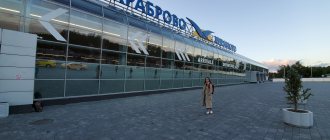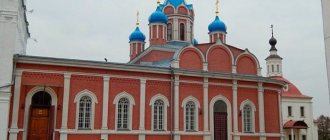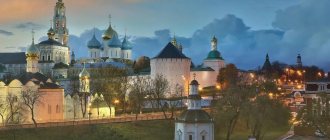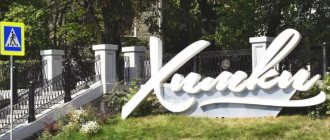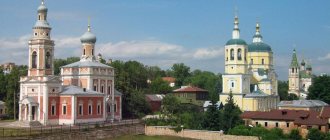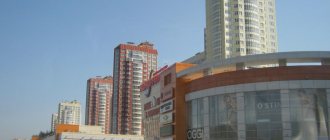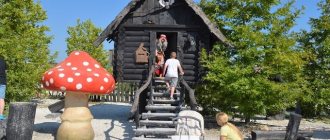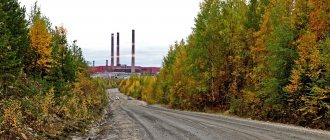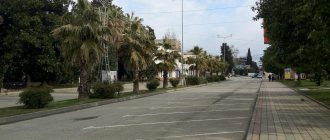Sochi is the largest resort center in the Russian Federation. After the Winter Olympics in 2014, the Black Sea coast of the Western Caucasus turned into a huge cultural and infrastructural center.
Urbanization processes in Sochi began relatively recently - in 1864, so the city is considered a fairly young municipal center. As a result of this state of affairs, the main population growth is provided by migration processes. The speed and strength of migration is also influenced by the prestige of Russia's resort center: Sochi is one of the cities whose population has been growing steadily since 1980.
Current data
According to current statistics, in 2021 443,562 people live in Sochi. Data on the population are presented on the website of the Official Statistical Service Rosstat, in the corresponding section. Exactly the same figure is indicated on the portal of the Unified Interdepartmental Information and Statistical System EMISS. As mentioned earlier, the population of the resort continues to increase due to the powerful flow of migrants.
Using statistics, you can independently verify the strength of migration processes: in 2015, only 389,946 people lived in Sochi. The difference, amounting to 53,616, is an impressive figure that confirms a well-known demographic fact.
Georgians
The collapse of the Union of Soviet Socialist Republics, the entry into force of the “Law on the procedure for exit from the USSR and entry into the USSR of citizens of the USSR”, the default in Russia in 1998 led to the mass repatriation of Greeks, Germans, Jews from the country in general and from Sochi in particular. If in 1992 the share of the Greek population in Sochi was 1.4%, then in 2002 this figure dropped to 0.9%.
The share of the Georgian population, on the contrary, increased over the same period. The descendants of the settlers of the 80s of the 19th century were joined by refugees from Abkhazia who emigrated here after the Georgian-Abkhaz conflict. It should be noted that every ethnic conflict adds more and more forced migrants to Sochi. But, let's return to the Georgian population. In 1992, the share of the Georgian population in Sochi was 1.5%, and in 2002 it was already 2.4%. At the same time, there were more Abkhazians in Sochi.
Dynamics by year
The official statistical service Rosstat and the Unified Interdepartmental Information and Statistical System have published all the data regarding the growth dynamics of Sochi residents 2005-2020.
| Population of Sochi, thousand people. | Years. |
| 329 | 2002 |
| 328 | 2005 |
| 343 | 2011 |
| 360 | 2012 |
| 368 | 2013 |
| 399 | 2014 |
| 389 | 2015 |
| 401 | 2016 |
| 411 | 2017 |
| 424 | 2018 |
| 438 | 2019 |
| 443 | 2020 |
Thanks to the statistics presented, we are able to roughly estimate the rate of population growth in Sochi. The noticeable jump in 2015 corresponds to a well-known event: this year Russia received the status of host country for the 2018 FIFA World Cup. Over 3 years, the number of residents increased to 34,335 people - the maximum jump for the entire study period. Today the city's population is 443,562 people.
Districts of Sochi
Sochi is a record-breaking city. It occupies an area of almost 150 kilometers. There is no city longer than this in all of Europe. And in the whole world it ranks second, second only to Mexico City.
Surprisingly, the city is divided into only 4 districts:
- Central;
- Khostinsky;
- Lazarevsky;
- Adlersky.
True, each of these districts is subdivided into several microdistricts.
Map of Sochi districts
About the city
Sochi is the largest Black Sea city in Russia, as well as an extremely popular and very prestigious resort located in the Krasnodar Territory. Most of the settlement, 3.5 thousand square kilometers in size, lies on the Black Sea coast. Sochi is a major economic and cultural center, acting as a “tourist capital” and financial center of the entire coast. In addition, the resort bears the title of the longest city in Russia, as its territory extends almost 145 kilometers along the Black Sea coast.
In terms of the religious component, most of the Sochi electorate are Orthodox Christians. On the territory of the urban settlement there are more than 30 temples, chapels, churches and monasteries. The Catholic religious center is presented in a single version - in the form of a small temple, the parishioners of which are mainly representatives of the Armenian ethnic group. There is a not very popular Roman Catholic parish in the city, with the main flock consisting of Russians, Ukrainians and Belarusians with Polish roots.
It’s easy to guess that in the resort capital of the Russian Federation you can find a huge number of interesting cultural and entertainment facilities. About 10-15 cinemas alone have been built, and the oldest of them turned 30 years old in 2021. The well-developed infrastructure includes more than 70 educational schools, 20 universities, as well as a huge number of sports facilities. The construction of all kinds of sports complexes was greatly influenced by the 2014 Winter Olympics, which gave rise to the all-Russian construction of the dream city.
Mass moves
The Olympics, Formula 1, the sea, a favorable climate, and just a good atmosphere - all this attracts not only tourists to Sochi. Many people want to move to this city for permanent residence and, I must say, for the majority of those who wish, this dream is successfully realized. As a matter of fact, even before the Olympics, Sochi was wildly popular among Russians and residents of neighboring countries. But after this event, endless streams of tourists began to come here. And many are happy to stay alive. Due to this, the number of residents increases accordingly. It’s good to live in Sochi - prices are not as high as they are described, besides there is the sea, mountains, climate, and in general - you want to be in such a city all the time. Considering how popular Olympic has become recently, we can expect that in the coming years the number of residents will increase not just by several tens of thousands, but by hundreds. Fortunately, the city has all the conditions for a good life - this is another reason why people come here. Sochi is a promising and modern city with a lot of opportunities. And the main thing is that the people living in it help make it better.
Ethnic composition
Modern indicators of the population and national composition of Sochi were formed during the Soviet Union, as a result of strong migration processes. Initially, until 1864, this land was inhabited by all kinds of peoples of the Western Caucasus: Shapsugs, Ubykhs, etc.
Also, the territory of the resort is considered the original homeland of the original Adyghe people: Adyghe, Kabardians, Circassians. After Russia's victory in the Crimean War of 1864, the ethnic composition of the city's population began to change towards Russification. By the end of the 19th century. The hospitable lands of the Black Sea coast have become home to peacefully living representatives of as many as 25 nationalities.
The last major All-Russian census, held in 2010, helped in compiling up-to-date statistics on ethnic composition. Of the nearly 421,000 respondents, more than 403,000 people indicated their nationality. Thanks to the research, it was possible to find out that the resort’s electorate consists of people who identify themselves with the following ethnic groups:
- Russians - 69.92%.
- Armenians - 20.09%.
- Ukrainians - 2.29%.
- Georgians - 2.03%.
- Adygs - 1.20%.
- Greeks - 0.82%.
In addition to these nationalities, Tatars, Belarusians, Abkhazians, Ossetians, Kazakhs, etc. live in the city, but their number as a percentage is less than 1%.
Armenians
More than 20% of the population of modern Sochi are Armenians. According to unofficial data, their numbers are much larger and are growing steadily. The first Hamshen Armenians appeared on the coast in the mid-60s of the 19th century. Due to the difficult socio-economic situation, they left Turkey and, at the invitation of the Russian government, settled here.
They mastered it much faster than Russians, Ukrainians, and Belarusians, since the mountain culture of agriculture was closer to them than to people from the central provinces of Russia. The second wave of resettlement of Hamshen Armenians to the Sochi section of the Black Sea coast occurred at the end of the 19th and beginning of the 20th centuries, after mass pogroms in Turkey.
In our time, there were several more streams of Armenian refugees in Sochi: after the Spitak earthquake, when more than 500 thousand people were left homeless and people were resettled in hotels and sanatoriums of the city; during the escalation of the Karabakh conflict; in the 90s, during the collapse of the USSR, and the economic devastation that followed it in Armenia, Azerbaijan, and Georgia. Most of the Armenian population of Sochi lives in the villages of the Adler region.
Migration
As mentioned earlier, the bulk of the population and ethnic composition of the center of the Black Sea coast was formed in Soviet times, due to strong migration processes. Today, the city is in 29th place in terms of migration intensity among all cities of the Russian Federation. According to current data, there are approximately 14 migrants per 1000 inhabitants of a locality.
In terms of the influx of migrants, the city is already in 18th place in Russia: in 2021, about 22,000 people moved to Sochi, choosing the resort center as a permanent place of further residence. Also, according to the Rosstat service, the outflow of the population in 2020 amounted to 15,796 people. According to this indicator, the Black Sea center is also in 18th place among all Russian cities.
Data for the Krasnodar Territory
“Seasonal” gains
The population of the city of Sochi increases in the summer not only because of vacationers. Although, of course, given how popular this resort is among residents of Russia and countries near and far abroad, it should not be surprising that in the summer it becomes a city with a population of over a million. But tourists are not the only “arrivals”. Every year thousands of people (mostly young people) come to Sochi to work. They are mainly engaged in service and catering. Many people decide to come to Olimpiyskiy to earn a little extra money and at the same time have a good time near the sea.
Gender and age
Today, the city has a predominant female population - 53.7% versus 46.3% for men. This state of affairs is traditional for Russia in the Soviet and post-Soviet years. According to the Unified Interdepartmental Information and Statistical System, the average age of the resort center population is 39 years.
Data for the Krasnodar Territory
Settlements
The urban district (city of regional subordination of Sochi) includes 81 settlements:[5][29][30][31]
| List of settlements | ||||
| № | Locality | Type of settlement | Population | Administrative subordination (intra-city district) |
| 1 | Sochi | city | ↘432 322[4] | central District |
| 2 | Aibga | village | ↘155[18] | Adlersky district |
| 3 | Alekseevskoe | village | ↗405[18] | Lazarevsky district |
| 4 | Altmetz | village | ↘197[18] | Lazarevsky district |
| 5 | Akhshtyr | village | ↗168[18] | Adlersky district |
| 6 | Baranovka | village | ↗996[18] | Lazarevsky district |
| 7 | Baranovka | village | ↗2807[18] | Khostinsky district |
| 8 | Beranda | village | ↗450[18] | Lazarevsky district |
| 9 | Bestuzhevskoe | village | ↘287[18] | Adlersky district |
| 10 | Bzogu | village | ↗12[18] | Lazarevsky district |
| 11 | Bogushevka | village | ↗349[18] | Khostinsky district |
| 12 | Big Kichmay | aul | ↗724[18] | Lazarevsky district |
| 13 | Varvarovka | village | ↗281[18] | Lazarevsky district |
| 14 | Vardane-Verino | village | ↘298[18] | Adlersky district |
| 15 | Vasilyevka | village | ↗444[18] | Lazarevsky district |
| 16 | Upper Armenian Khobza | village | ↗570[18] | Lazarevsky district |
| 17 | Verkhnearmyanskoe Loo | village | ↗639[18] | Lazarevsky district |
| 18 | Verkhnevesoloye | village | ↗2374[18] | Adlersky district |
| 19 | Verkhneye Buu | village | ↗908[18] | Lazarevsky district |
| 20 | Upper Uchdere | village | ↘184[18] | Lazarevsky district |
| 21 | Verkhnenikolaevskoe | village | ↘1015[18] | Adlersky district |
| 22 | Verkhnerusskoe Loo | village | ↗24[18] | Lazarevsky district |
| 23 | Upper Anchor Slit | village | ↗260[18] | Lazarevsky district |
| 24 | Upper Yurt | village | ↘2498[18] | Khostinsky district |
| 25 | Verkhovskoye | village | ↗184[18] | Khostinsky district |
| 26 | Veseloye | village | ↗4140[18] | Adlersky district |
| 27 | Volkovka | village | ↘2351[18] | Lazarevsky district |
| 28 | Volkonka | village | ↗467[18] | Lazarevsky district |
| 29 | Vorontsovka | village | ↘127[18] | Adlersky district |
| 30 | High | village | ↗3910[18] | Adlersky district |
| 31 | Galitsyno | village | ↗991[18] | Adlersky district |
| 32 | Gornoye Loo | village | ↗3322[18] | Lazarevsky district |
| 33 | Carpenter | village | ↗517[18] | Lazarevsky district |
| 34 | Dubravny | village | ↗335[18] | Adlersky district |
| 35 | Ermolovka | village | ↘370[18] | Adlersky district |
| 36 | Zubova Gap | village | ↘253[18] | Lazarevsky district |
| 37 | Izmailovka | village | ↘1290[18] | Khostinsky district |
| 38 | Illarionovka | village | ↘439[18] | Adlersky district |
| 39 | Cossack Brod | village | ↗1351[18] | Adlersky district |
| 40 | Kalezh | aul | ↘393[18] | Lazarevsky district |
| 41 | Kalinovoe Lake | village | ↘741[18] | Adlersky district |
| 42 | Katkova Gap | village | ↗171[18] | Lazarevsky district |
| 43 | Chestnuts | village | ↗664[18] | Adlersky district |
| 44 | Kepsha | village | ↘316[18] | Adlersky district |
| 45 | Regional-Armenian | village | ↗1624[18] | Khostinsky district |
| 46 | Red Will | village | ↗990[18] | Adlersky district |
| 47 | Krasnaya Polyana | town | ↘4858[4] | Adlersky district |
| 48 | Lesnoye | village | ↗423[18] | Adlersky district |
| 49 | Lipniki | village | ↘153[18] | Adlersky district |
| 50 | Lygoth | aul | →43[18] | Lazarevsky district |
| 51 | Maly Kichmay | aul | ↘205[18] | Lazarevsky district |
| 52 | Mamedova Gap | village | ↗256[18] | Lazarevsky district |
| 53 | Maryino | village | ↗117[18] | Lazarevsky district |
| 54 | Medoveevka | village | ↗118[18] | Adlersky district |
| 55 | Moldavian | village | ↗2245[18] | Adlersky district |
| 56 | Monastery | village | ↗166[18] | Adlersky district |
| 57 | Najigo | aul | ↘141[18] | Lazarevsky district |
| 58 | Lower Uchdere | village | ↗1425[18] | Lazarevsky district |
| 59 | Nizhnyaya Shilovka | village | ↗5432[18] | Adlersky district |
| 60 | Ordynka | village | ↗405[18] | Lazarevsky district |
| 61 | Eagle-Emerald | village | ↗5726[18] | Adlersky district |
| 62 | Otradnoe | village | →131[18] | Lazarevsky district |
| 63 | Plastunka | village | ↗2270[18] | Khostinsky district |
| 64 | Progress | village | ↗1608[18] | Khostinsky district |
| 65 | Broken Cauldron | village | ↗539[18] | Lazarevsky district |
| 66 | Razdolnoe | village | ↗2243[18] | Khostinsky district |
| 67 | Russian Mamaika | village | ↗398[18] | Khostinsky district |
| 68 | Semyonovka | village | ↗237[18] | Khostinsky district |
| 69 | Sergey-Pole | village | ↗1923[18] | Lazarevsky district |
| 70 | Solohaul | village | ↗214[18] | Lazarevsky district |
| 71 | Tatyanovka | village | ↘23[18] | Lazarevsky district |
| 72 | Third Company | village | ↘76[18] | Lazarevsky district |
| 73 | Thagapsh | aul | ↗167[18] | Lazarevsky district |
| 74 | Hajiko | aul | ↗518[18] | Lazarevsky district |
| 75 | Khartsyz II | village | →156[18] | Lazarevsky district |
| 76 | Khartsyz the First | village | ↘348[18] | Lazarevsky district |
| 77 | Grain grower | village | ↗584[18] | Adlersky district |
| 78 | Chvizhepse | village | ↘60[18] | Adlersky district |
| 79 | Cherries | village | ↗2426[18] | Adlersky district |
| 80 | Fourth Company | village | →0[18] | Lazarevsky district |
| 81 | Estosadok | village | ↗890[18] | Adlersky district |
See also: Districts of Sochi
The city of Sochi as an object of the administrative-territorial structure of the Krasnodar Territory consists of the following administrative-territorial units: 4 intra-city districts (districts), to which rural (settlement) districts located within the boundaries of the city of Sochi are administratively subordinate, including 1 settlement district and 11 rural districts.[5][29][31].
Marriages and divorces
It is not possible to determine the statistics of marriages and divorces in Sochi separately from the Krasnodar region, since only general information for the entire region is published in open official sources. According to the Ministry of Justice of the Russian Federation, the Krasnodar Territory took fourth position in the list of cities with the largest number of marriages in 2020.
From January to March 2021, 6.8 thousand new social units were registered in Kuban. Also, according to the Rosstat service, in the Krasnodar Territory in 2021, there were 21,367 divorces out of 38,674 marriages.
Data for the Krasnodar Territory
Symbolism
The flag and coat of arms of the municipality were approved on January 21, 2003[6]. The coat of arms repeats the Soviet coat of arms of the city with the exception of external decorations in the form of a wreath with the motto and the “Hammer and Sickle” emblem. The symbolism of the flag reproduces the symbolism of the coat of arms.
The blason of the modern coat of arms, according to evidence, sounds like this:
The shield is divided into four parts by silver and scarlet, on top of which there is an azure shingle, burdened at the top with a silver bowl without a stand, accompanied at the top by a scarlet thunder arrow in the belt, and below by silver drops without number. In the first part there are three silver mountains, thinly bordered with azure; in the second part there is a golden palm tree; in the third part there is a flaming golden sun (without an image of a face); in the fourth part there is a thin azure lowered, chipped, curved belt.
Forecast
Today, there are several dozen publications from large and authoritative sources - all studies predict an impressive growth in the population of Sochi. For example, according to forecasts by employees of the Department of Economics and Strategic Development, the population of the resort will increase by more than 100,000 people by 2030. Such predictions have a strong factual basis: about 6-7 thousand children are born on the Black Sea coast every year, and this is only a natural increase. Traditionally strong migration processes will have an even greater impact on the final number of residents of the resort center.
Population
Main article: Population of Sochi
| Population | ||||||||
| 1888 | 1891 | 1897 | 1904 | 1916 | 1926[15] | 1932[15] | 1939[15] | 1959[15] |
| 268 | ↗460 | ↗1352 | ↗8163 | ↗13 254 | ↘13 000 | ↗17 010 | ↗72 597 | ↗127 000 |
| 1970[15] | 1979[15] | 1989[15] | 1992[15] | 1994[15] | 1997[15] | 2002[16] | 2006 | 2007 |
| ↗245 300 | ↗292 300 | ↗361 200 | ↗369 900 | ↗378 300 | ↗388 200 | ↗397 103 | ↘395 012 | ↗402 043 |
| 2008 | 2009[17] | 2010[18] | 2011[19] | 2012[20] | 2013[21] | 2014[22] | 2015[23] | 2016[24] |
| ↗406 800 | ↗410 987 | ↗420 589 | ↗421 452 | ↗437 604 | ↗445 209 | ↗473 206 | ↘467 681 | ↗480 215 |
| 2017[25] | 2018[26] | 2019[27] | 2020[28] | 2021[4] | ||||
| ↗492 601 | ↗507 365 | ↗524 023 | ↗530 391 | ↘518 589 | ||||
84.30% of the population of the urban district live in urban areas (Sochi, Krasnaya Polyana).
Central district of Sochi
This is the most popular district among both residents and tourists. The former value it for its excellent infrastructure and developed transport network. In the Central District of Sochi there are many shops, kindergartens and schools, there are universities, and large shopping centers. Cafes, restaurants, canteens have been built. There are no problems with transport; there is a seaport, a railway station, and bus stations. You can go to any city in the Krasnodar Territory, there are many flights throughout Russia, there are international flights.
Tourists appreciate the Central District for its large number of attractions:
- arboretum;
- Riviera amusement park;
- Winter theater.
The Arboretum is one of the key attractions of the Central District of Sochi.
Many hotels, hostels, and guest houses have been built here for vacationers.
Only wealthy Sochi residents can afford apartments in the Central District. Moreover, the area is constantly being built up with elite neighborhoods with expensive apartments.
Adlersky district of Sochi
It ranks second in area, second only to Lazarevsky - 35 km². About 152,000 people live here. This is the southernmost district of the city. This is where Sochi International Airport is located. Previously, the Adler district was not particularly popular, but everything changed after the 2014 Olympics, which took place on its territory. After it was held, many new attractions remained:
- Olimpic village;
- Olympic Park;
- Sochi Park;
- Nizhneimeretinskaya embankment.
The Nizhneimeretinskaya embankment was built for the Olympics.
Of course, the infrastructure of the area has changed - transport logistics have improved, many hotels have been built, restaurants and cafes have opened. Real estate has risen sharply in price.
Active construction of new residential areas is underway in the center of Adler. The entire coastline is occupied by hotels.
In addition, the Adler region has always been distinguished by beautiful nature and clean air. It is quieter and calmer here than in the center of Sochi, there are fewer cars. The sea is clean, the beaches are well equipped.
The center of Sochi can be reached by private transport in half an hour.
The downside is noise from airplanes and railroads.
Microdistricts of the Adler region
The Imereti microdistrict became popular after the Olympics. Now there is the most expensive real estate on the coast, five-star hotels, amusement parks and good restaurants. There is a school here, there are shopping centers, and there are no problems with transport. The disadvantages include the small number of green spaces and traffic jams during the tourist season.
The resort town is located five kilometers from the airport. Locals practically don’t live here, only those who are involved in the tourism business. The entire microdistrict is built up with boarding houses, hotels, and guest houses. There is a water park, a dolphinarium, a cinema and several shopping centers. There are many cafes and bars on the coast.
The Blue Dali microdistrict is located on a hill, with beautiful views of the sea from the windows of the houses. Tourists are not particularly fond of it, since it takes about 15 minutes to get to the sea through traffic jams or walk for about half an hour. But the Sochi residents themselves willingly buy real estate here. It is cheaper than on the coast. Active construction of multi-apartment residential buildings is underway.
Microdistrict Blue Dali
The Chkalovsky microdistrict is a private sector with inexpensive houses and cottages. There are no hotels here, mostly small guest houses. The infrastructure is poorly developed and there is little entertainment. Most cafes and restaurants are open seasonally.
Famous people
Famous scientists, writers, and athletes once lived in Sochi, received treatment and rested. But some of them were luckier - they were born in this warm southern city and glorified it in their own way. The top ten celebrities include:
1.
(born in 1938). The Central Stadium was named in honor of the outstanding football player, striker, Honored Master of Sports, coach of the Georgian SSR.
2. Andrei Geim (1958) – Nobel laureate in physics (2010). A native of Sochi is now a citizen of the Netherlands.
3. Boris Nemtsov (1959) – politician, public figure and statesman.
4. Grigory Leps (1962) – singer and composer, owner of a unique vocal range and recognizable voice.
5. Irina Gribulina (1962) – Soviet radio and television presenter.
6. Stas Mikhailov (1969) - popular performer and composer. He released his first album in 1997, but gained wide popularity and recognition already in the 2000s.
7. Andrey Grigoriev-Apollonov (1970) – better known by his nickname Red from “Ivanushki”, musician and singer.
8. Yevgeny Kafelnikov (1974) – Honored Master of Sports, the most famous tennis player in the history of Russia.
9. Mikhail Galustyan (1979) – legendary KVN performer, comedian, and actor beloved by many.
10. Alexey Voevoda (1980) – master of sports of international class, who gained fame in arm wrestling and bobsleigh.
11. Yulia Vasilievna Parshuta (1988) – singer and actress, author and composer. She took part in the program “Star Factory”, and was also a soloist in “Yin-Yang”.
Lazarevsky district of Sochi
It is the longest of all. It occupies as much as 105 kilometers of the Black Sea coast. But not many people live here, about 96,000 people. This is a quiet and environmentally friendly area. Most of its territory is made up of the private sector and cottage communities. There are practically no multi-storey buildings and residential areas here, and there is no construction going on either. The transport network is well developed; you can travel to other areas of Sochi without any problems. But in some particularly remote parts of the Lazarevsky district there are still difficulties with electricity, gas, water supply and good roads.
Real estate here is inexpensive; it is mainly purchased for further rental to tourists.
The beaches are clean, but their equipment is much inferior to the beaches of other areas. There are also few large shopping centers or good restaurants; small shops and eateries predominate here.
Microdistricts of Lazarevsky district of Sochi
The Lazarevsky district includes 26 microdistricts, an urban settlement and 6 rural districts. However, most of them are of no interest either to tourists or to Sochi residents. These are ordinary, unremarkable small villages with minimal infrastructure.
Most of the residents and tourists of the Lazarevsky district prefer to live in its administrative center - the village of Lazarevskoye. Over 30,000 people live here. There are few jobs; they are all mainly employed in the hotel business. Lazarevskoye is a modern village with a large number of hotels, cafes and canteens, and shops. Several water parks and a dolphinarium have been built here. There are several schools, a university, technical schools, and hospitals.
Real estate is cheaper than in other areas of Sochi. But if we compare Lazarevskoye with other microdistricts of the Lazarevsky district, then it will be the most expensive.
Loo is another popular village among tourists and Sochi residents. It is smaller in area and population than Lazarevskoye. Located about an hour's drive from the center of Sochi. There is a school, but the rest of the social infrastructure is poorly developed. But there are no problems with transport - there are both trains and buses. There are no multi-storey buildings in Loo, only the private sector. The buildings are mostly simple, the houses are cheap. There are practically no cottages or luxury real estate.
The village of Loo in the Lazarevsky district
Dagomys is an urban village and a popular resort. About 20,000 Sochi residents live here. There are many more tourists during the peak high season. Hotels and guest houses have been built for them in the village, and locals rent out their cottages. There are several hospitals, schools, and development centers in Dagomys. The beaches are well-maintained, the sea is clean. Lots of greenery, clean air.
